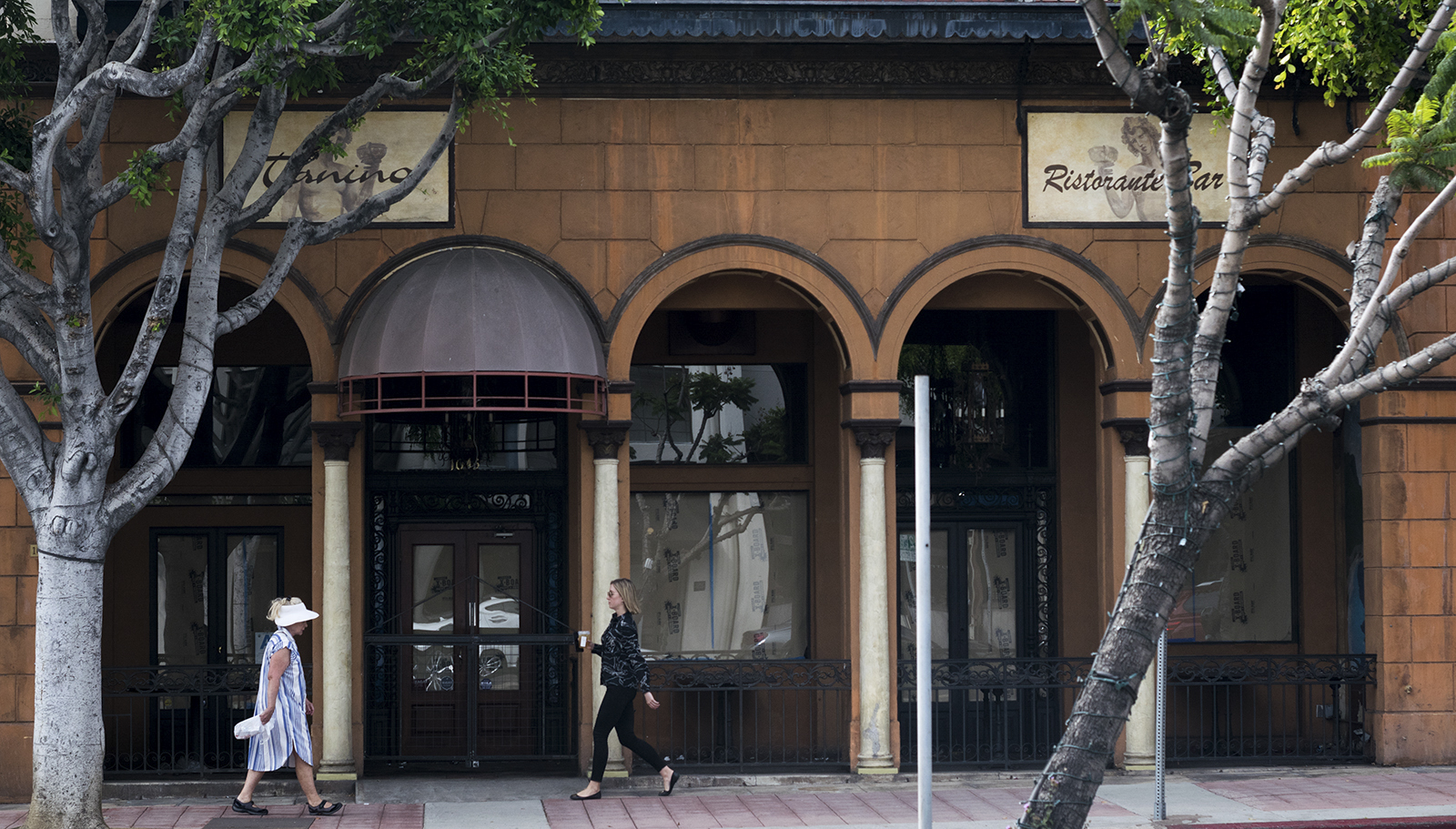WVIA discusses renovations allowed for buildings with historic designations

The Los Angeles City Council designated the Kelly Music Building a Historic-Cultural Monument in December. The Westwood Village Improvement Association explored the possibility of altering historic buildings such as this one at a committee meeting Wednesday. (Daily Bruin file photo)
By Arif Abd Aziz
March 5, 2020 12:42 a.m.
The local business improvement district is exploring potentially altering historic buildings in Westwood Village.
The planning and mobility committee of the Westwood Village Improvement Association met with Los Angeles City Planning staff Wednesday to discuss the extent to which some historic buildings could be altered. Such alterations could include updated interiors or facades that can attract novel businesses and more foot traffic to the Village.
Andrew Thomas, the WVIA’s executive director, said the Westwood Village Specific Plan, a 1989 zoning and regulatory framework, identified 45 buildings in the Village as historically significant. Some of these resources are already officially recognized and some are eligible for local, state and national designation, Thomas added.
The buildings housing Peet’s Coffee on Westwood Boulevard and California Pizza Kitchen on Broxton Avenue are both eligible for national historic designations. The Fox Village Theatre is already an LA Historic-Cultural Monument. Local historic designations were assigned to Stan’s Donuts on Weyburn Avenue, the UCLA Blood & Platelet Center on Gayley Avenue and the Gayley Center within the Specific Plan.
Julia Duncan, a City of LA planning assistant, said property owners and the city council can cooperate in the alteration of an establishment.
Adrian Fine, director of advocacy for the Los Angeles Conservancy, said alterations are possible if specific to the establishment’s characteristics.
“A lot of people think once you’re designated, you can’t do anything with the building,” Fine said. “It’s always a case-by-case to figure out what are the (establishment’s) unique challenges.”
Johnson Heumann Research Associates, a survey research group, conducted a historical survey from 1986 to 1987, which contributed to Westwood Village’s original designations. Between 2010 and 2017, SurveyLA, a citywide historical resources survey spearheaded by LA Department of City Planning principal city planner Ken Bernstein, identified more potential sites around Westwood.
Thomas said that overlap between the two surveys was normal and did not jeopardize designations.
“SurveyLA does not override the Specific Plan, so if your property is not listed on SurveyLA but you are on the Specific Plan, it still counts,” Thomas said.
Although Westwood is home to 45 historical resources, LA City Planning has classified the Village as a planning district and not a historic district. Many of the Village’s historic buildings have already had significant renovations and alterations which prevent it from being a historic district, Thomas said.
“The Village has a unique history, remarkable architecture and a very distinctive sense of place,” Bernstein said. “We tried to capture that by calling (Westwood Village) a planning district.”
The process of historic designation depends on nominations from property owners and the city council. Fine said the incentives that come with historic designations have motivated property owners to make nominations.
“The majority of nominations that we get for Historic-Cultural monuments actually come from property owners themselves,” Fine said. “Mostly because people want to participate in the Mills Act Program, which is a major incentive program that can provide owners of historic properties significant tax reduction.”
Fine also said the LA Conservancy launched a study to allay some owners’ fears of depreciation, specifically of properties designated as historic sites.
“I think there’s often a belief that historic designations — because it leads to additional review — may devalue a property,” Fine added. “The evidence locally and nationally certainly is just the opposite, and historic designation typically adds value.”
Owners receive a reduction in property tax as long as they maintain the historic site, according to the Mills Act Program. Fine said 900 properties are under the Mills Act Program in LA alone but added that some of Westwood Village’s properties are not eligible until they receive formal historic designation.
Bernstein said the renovation of the Tower Theatre’s interior in Downtown LA into an Apple Store is an example of a successful alteration to a historic site.
The restoration project hopes to preserve the historic theater and attract more foot traffic to Downtown LA.
The Tower Theatre’s restoration is still ongoing, but its alterations were very substantial, which Duncan argued was not usually the case.
“Ninety-five percent of projects that come before (City Planning) aren’t proposing work that’s considered a significant alteration,” Duncan said.

